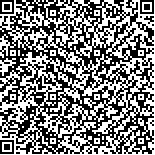|
|
| |
|
|
| 本文已被:浏览 63次 下载 0次 |

码上扫一扫! |
|
|
| 长牡蛎(Crassostrea gigas)野生与选育群体的微卫星遗传多样性分析 |
|
李妍1,2,3, 姚健涛1,2, 张恩烁1,2, 孙泽轩1,2, 孙国华1,2,4, 李彬3,4, 杨建敏1,2,4, 冯艳微1,2,4, 王卫军1,2,4
|
|
1.鲁东大学农学院 山东烟台 264025;2.牡蛎种质创制与高效养殖山东省工程研究中心 山东烟台 264025;3.烟台市崆峒岛实业有限公司 山东烟台 264001;4.烟台市海育海洋科技有限公司 山东烟台 264004
|
|
| 摘要: |
| 为了评估长牡蛎(Crassostrea gigas) 2个壳长性状(掌心形)快速生长选育群体(LY2-K4、LY2-K7)、1个壳高性状(速生型)快速生长选育群体(LY2-K11)和6个野生群体(QHD、LS、HD、ZH、WD、KTD)的遗传多样性和遗传结构, 用21对多态性丰富的微卫星引物对9个长牡蛎群体的269个个体进行了遗传分析。结果显示: 21个微卫星位点共检测出了460个等位基因(Na),平均等位基因数为21.905; 21个微卫星位点的多态信息含量(PIC)均大于0.5, 具有高度遗传多态性; 选育群体LY2-K11的遗传多样性最低(Na=13, I=2.128,He=0.831, PIC=0.825), 野生群体KTD的遗传多样性最高(Na=29,I=3.112, He=0.941, PIC=0. 938); 189个群体位点组合有66%偏离哈代-温伯格平衡, 表明这些群体存在一定程度的杂合子缺失; 9个群体间的遗传分化指数(Fst)为0.012~0.064, 处于较低的遗传分化水平; AMOVA分析显示遗传变异主要来自于个体内; PCoA分析结果与UPGMA聚类树一致, LY2-K11群体单独聚为一类, QHD和HD群体聚为一类, 其他6个群体聚为一类。综上所述, 长牡蛎3个选育群体和6个野生群体遗传多样性均较高, 遗传分化水平较低; 选育群体LY2-K11多样性略有下降, 选育过程中应保证亲本的数量及质量, 防止因近交衰退造成遗传多样性降低, 苗种抗逆性变差。该结果将为长牡蛎新品种的选育和野生种质资源的保护提供科学指导。 |
| 关键词: 长牡蛎(Crassostrea gigas) 选育群体 野生群体 微卫星 遗传多样性 |
| DOI:10.11693/hyhz20231000219 |
| 分类号:Q789;S968.3;S931 |
| 基金项目:国家自然科学基金项目,31402298号;山东省农业良种工程,2020LZGC016号;江苏省“双创计划”企业创新类项目,[2019]1454号。 |
|
| MICROSATELLITE ANALYSIS ON GENETIC DIVERSITY OF BREEDING POPULATIONS AND WILD POPULATIONS OF CRASSOSTREA GIGAS |
|
LI Yan1,2,3, YAO Jian-Tao1,2, ZHANG En-Shuo1,2, SUN Ze-Xuan1,2, SUN Guo-Hua1,2,4, LI Bin3,4, YANG Jian-Min1,2,4, FENG Yan-Wei1,2,4, WANG Wei-Jun1,2,4
|
|
1.School of Agriculture, Ludong University, Yantai 264025, China;2.Shandong Engineering Research Center of Oyster Germplasm Creation and Efficient Culture, Yantai 264025, China;3.Yantai Kongtongdao Industrial Co., Ltd., Yantai 264001, China;4.Yantai Haiyu Marine Science and Technology Co., Ltd., Yantai 264004, China
|
| Abstract: |
| To study the genetic diversity and genetic structure of three breeding populations (LY2-K7, LY2-K11, LY2-K4) and six wild populations (QHD, LS, HD, ZH, WD, KTD) of Crassostrea gigas, genetic analysis was performed on 269 individuals from 9 populations of C. gigas by using 21 polymorphic pairs of microsatellite primers. The results showed that 460 alleles were detected in 21 microsatellite loci, and the mean number of alleles was 21.905; the polymorphism information content (PIC) of 21 microsatellite loci was all greater than 0.5, indicating high genetic polymorphism; the genetic diversity of breeding population LY2-K11 was the lowest (Na=13, I=2.128, He=0.831, PIC=0.825), and that of wild population KTD was the highest (Na=29, I=3.112, He=0.941, PIC=0.938); 66% of 189 population locus combinations deviated from Hardy-Weinberg equilibrium, indicating heterozygote loss in these populations; the genetic differentiation coefficient (Fst) of the 9 populations ranged from 0.012 to 0.064, indicating that the genetic differentiation level was low among the populations; AMOVA analysis showed that the genetic variation was mainly from within the individual; the results of PCoA analysis were consistent with UPGMA phylogenetic tree, LY2-K11 population was grouped into one category, the QHD and HD populations into one category, and the other 6 populations into one category. In summary, the breeding and wild populations all have the highly genetic diversity, and the diversity of LY2-K11 population decreased slightly after breeding. In the process of breeding, the quantity and quality of parents should be ensured to prevent the decrease of genetic diversity and the deterioration of seed stress resistance from inbreeding depression. The results will provide scientific guidance for the breeding of new varieties and the protection of wild germplasm resources of C. gigas. |
| Key words: Crassostrea gigas breeding populations wild populations microsatellite marker genetic diversity |
|
|
|
|
|
|
